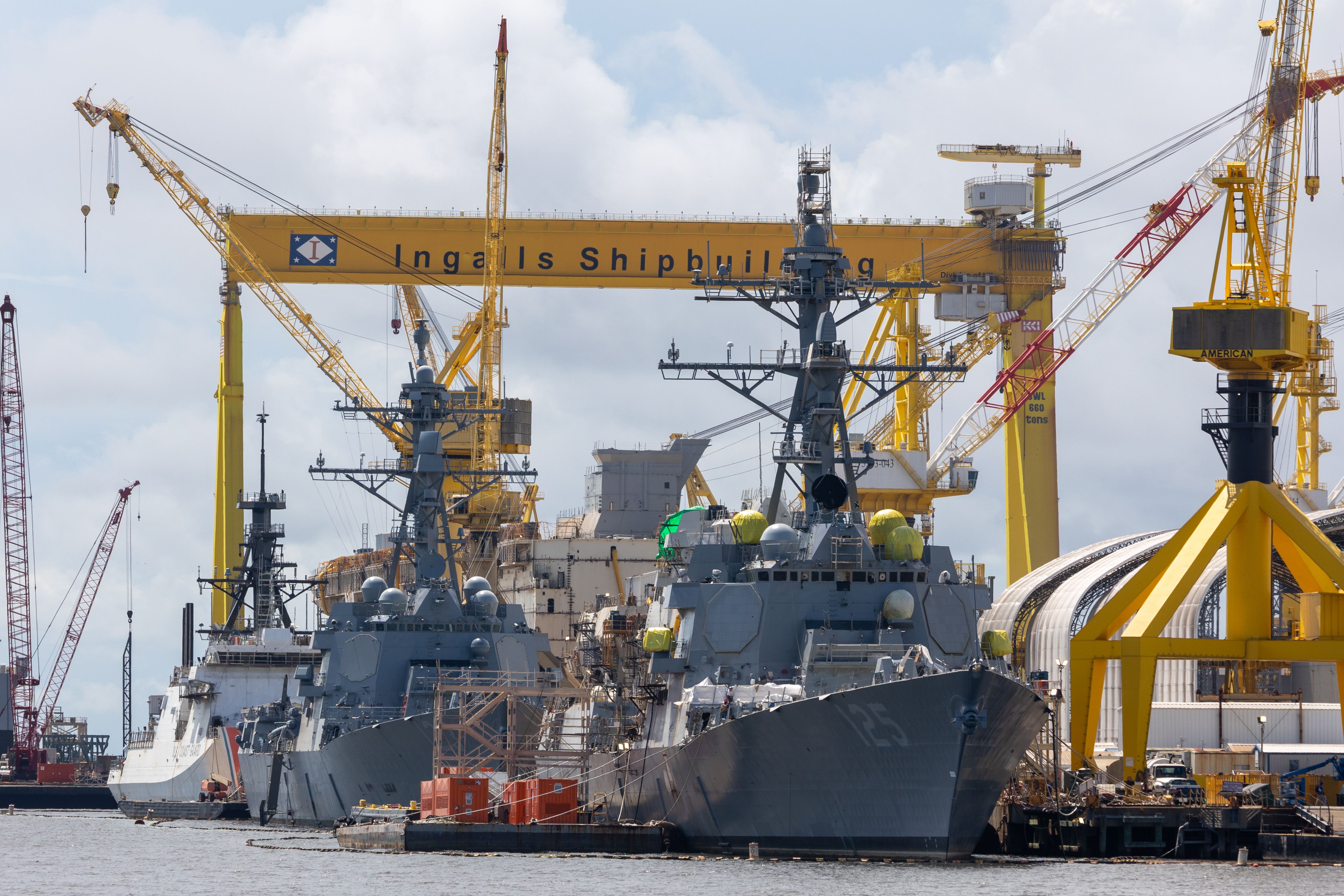
This story has been updated to include a statement from a spokesperson for Bath Iron Works.
WASHINGTON, D.C. – The Navy is keeping a two-ship-per-year cadence for its destroyer line because that’s a realistic goal for industry to work toward, according to the Pentagon’s top budget officer.
Despite Congress’ push for the Navy to start buying three Arleigh Burke-class Flight III destroyers per year, the Fiscal Year 2024 budget request unveiled last week showed the service buying two destroyers. That’s because U.S. shipyards are not yet able to build two destroyers per year, let alone three, Mike McCord said last week.
“I’m not hating on DDGs – my only point was that last year Congress added a third and the reason we didn’t budget for three is, again, we don’t see the yards being able to produce three a year. We don’t see them being able to produce two a year. And that’s just data. It’s not what we wish to be true. But everybody’s struggling with skilled labor. Everybody’s struggling with supply chain. So it’s not getting better very fast from the data that I’ve seen – whether with submarines or DDGs. So two a year seems to be a reasonable place,” McCord told USNI News at the McAleese Conference.
During the budget rollout last week, McCord said industry is currently building 1.5 destroyers per year, a number Chief of Naval Operations Adm. Mike Gilday has also cited when arguing that the shipyards have limited capacity.
McCord also argued that asking for more destroyers than industry can build takes away leverage from the Navy to negotiate with shipbuilders on price.
“If you keep sort of placing orders for things faster than they can be delivered, it’s good for the books, the balance sheets of the companies. But are you really, as the buyer, are you in the best place you’d like to be with any leverage or are you actually short of leverage when, you produce on time or you don’t produce on time. It doesn’t matter to me – I’m going to keep writing you checks,” McCord told USNI News.
The comptroller said both he and Susanna Blume, the director of the Cost Assessment and Program Evaluation (CAPE) Office of the Secretary of Defense, don’t think putting more funding toward an extra destroyer is a wise use of resources that will help shipbuilders deliver it to the Navy quicker.
“It’s just sort of piling up in the orders book and we’re still going to have the same problems of the yards producing faster until we get through the supply chain and the workforce issues,” McCord said. “It is not to say that we would not be interest[ed] in a more robust production world where in having three DDGs or moving to three submarines, but it doesn’t seem to be … realistic.”
General Dynamics Bath Iron Works, one of the yards that build the destroyers, has spent the last several years digging through a backlog of work at its Maine yard that the COVID-19 pandemic exacerbated. HII’s Ingalls Shipbuilding, the other yard that builds the Arleigh Burke destroyers, has performed better. Ingalls is also winding down the Coast Guard’s Legend-class National Security Cutter production line, which could open up more capacity at its yard in Pascagoula, Miss.
A spokeswoman for Ingalls Shipbuilding told USNI New in a statement that the yard is ready to support building three destroyers per year should the Navy go this route.
“Our shipbuilders will position to support whatever destroyer cadence the Navy needs and we have started by building, testing and taking the first Flight III ship to sea, which will be delivered later this year. We are a committed partner to not only our customers but to our network of nearly 1,200 suppliers as well. Together, we can build three DDGs a year if that is what the Navy and our country need,” Kimberly Aguillard said in a statement.

A spokesperson for Bath Iron Works told USNI News that it’s “working to aggressively recover schedule” at the shipyard.
“We support the call for a consistent demand signal that gives shipyards and suppliers the predictability to make major investments in workforce and facilities, both to expand destroyer production and to ensure that capability remains intact well into the future,” David Hench said in a statement. “Those capital investments are currently underway in Bath, and we are confident there will be significant schedule improvement so we can meet the Navy’s expectations by the time construction begins on the anticipated multi-year contract.”
Lawmakers have urged the Navy to work toward buying three destroyers per year and added a third destroyer on top of the Navy’s request for two in FY 2023. Congress also included a provision in the FY 2023 policy bill that would allow the Navy to ink a multi-year procurement deal for as many as 15 Flight III destroyers. If the multi-year procurement contracts are for fewer than 15 destroyers, the Navy must include at least one “pre-priced option” so it has the opportunity to buy 15 ships, according to the bill language.
Despite the authorities, the Navy, for now, is planning to buy two destroyers per year. The Future Years Defense Program, or the service’s five-year budget outlook, shows the Navy buying two ships per year from FY 2024 through FY 2028.
“We would love to live in a world where the yards could make three a year, or three submarines a year, but we don’t live in that world,” McCord said last week at the budget rollout.





